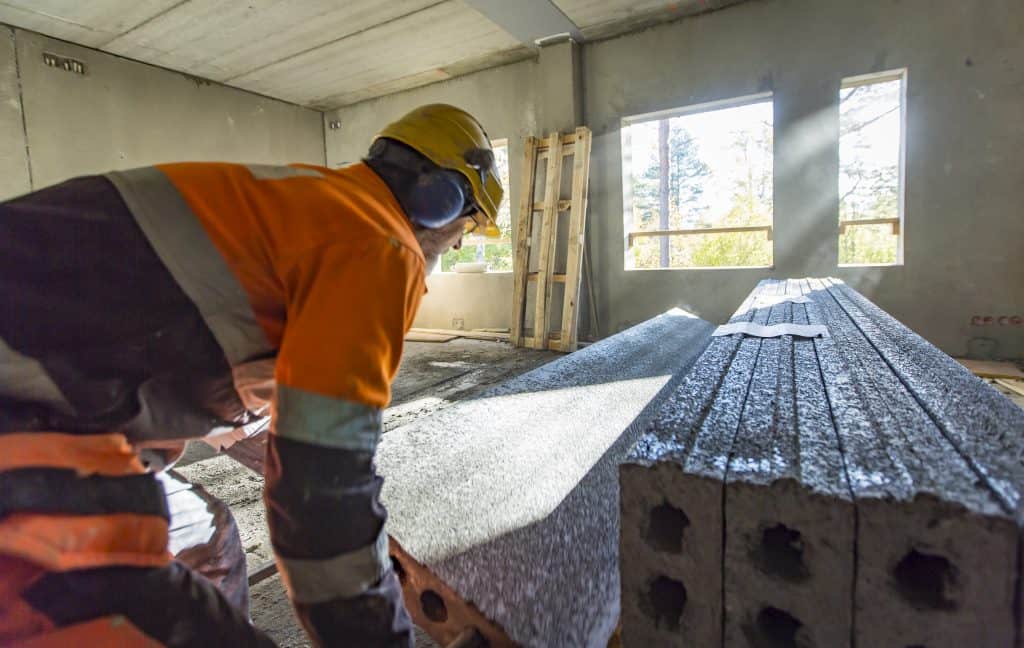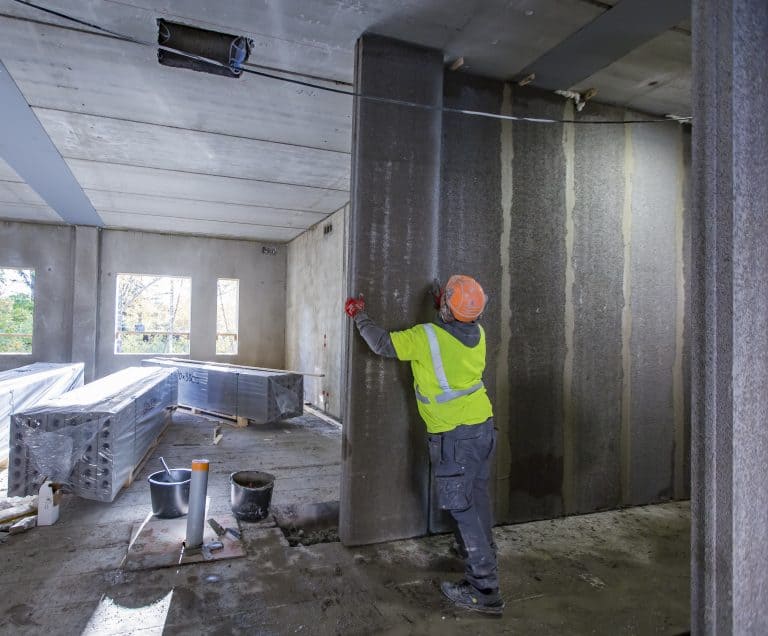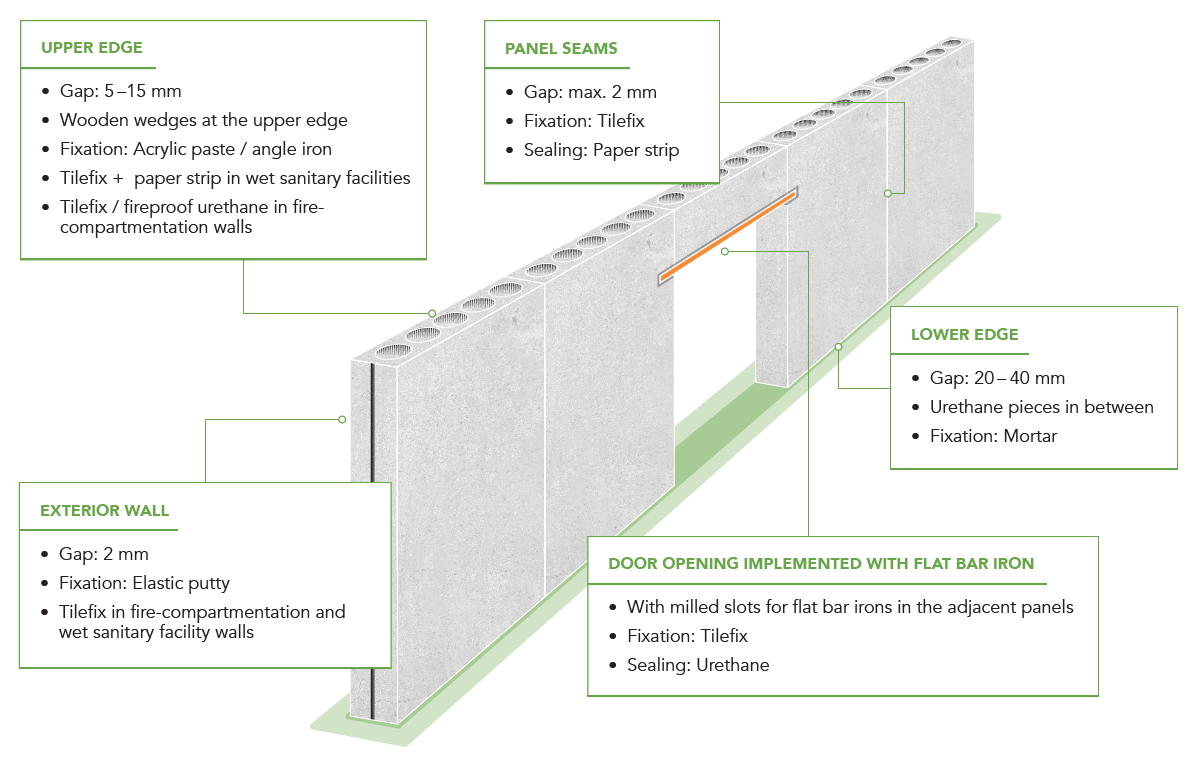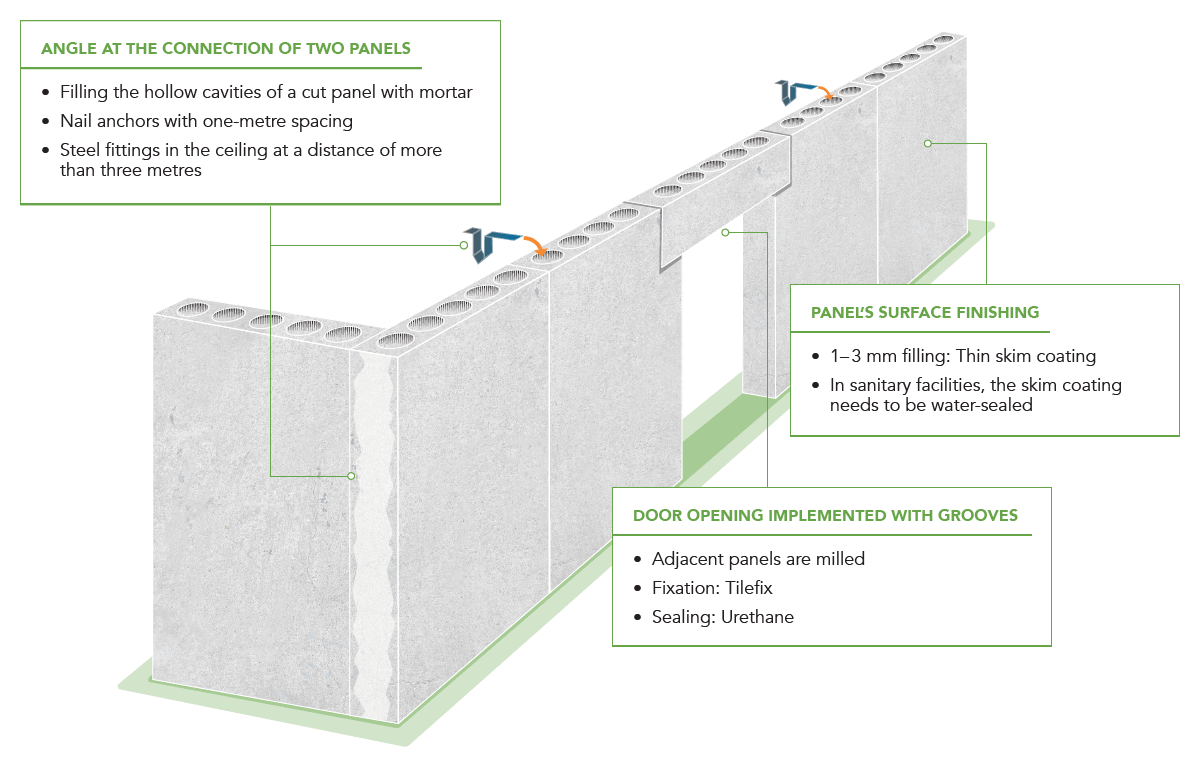This is how to install the Acotec partition wall panel correctly

The installation of the Acotec partition wall element panels is up to six times faster than the use of traditional construction methods, such as brickwork or laying block walls. When installing the panels, it is important to adhere to the local regulations and instructions, and also to take the local special requirements and conditions into consideration. “The installation of Acotec panels will result in a good outcome when our general instructions are followed,” says Jani Eilola, Product Director at Elematic.
Before starting to install a partition wall, it is important to create optimal drying conditions at the construction site for the Acotec panels fabricated from concrete and lightweight aggregate concrete. The moisture control of the panels is important, so as to avoid problems related to wall shrinkage.
“The panels must be stored in their packaging plastic until installation, because the plastic protects the panels from moisture caused by rain. The plastic is removed at the latest a day before installation, so that the humidity of the panels is balanced in accordance with the environment,” Eilola instructs. Special attention must be paid to the moisture control of the fire-departmentation Acotec panels.
Urethane is a sufficient sealing material in the seams of the Acotec wall
Care must be taken when installing Acotec panels, so that the determined gaps between the panel and the ceiling and the panel and the floor are retained. “Especially in the lower edge, the seam should be the recommended 20–40 mm, in order for the lower edge of the panel to remain below the floor filling and to leave the joining seam of the floor and the wall properly covered. However, this should be implemented such that the gap at the upper edge would be at its minimum,” Eilola says.
Sealing of the upper edge is carried out with urethane, which is sufficient in keeping the panels upright. If the length of the wall is more than three metres, the wall will be fixed to the ceiling with a fastener which can be a special Acotec fastener or a piece of a reinforcing steel bar. In a fire-departmentation wall, a U-shaped steel sheet filled with wool, Tilefix, or fireproof urethane will be used.
Alternatively, a more robust fastener can also be used in the upper edge, if one wants to ensure the ceiling’s settlement allowance. In this case, the floor height can become smaller, and the potential settlement must already be considered at the construction phase. When an angle iron bolted to the ceiling from both sides is used in the upper edge of the Acotec panel, it can be ensured that the weight of the ceiling will never rest on the non-load bearing Acotec wall,” says Eilola.
Conventional m100/500 mortar will be used in the masonry of the lower panel edge.

The elastic joint in the exterior wall allows for a shrinkage of the panel and movement of the building
When connected to an exterior wall, the gap between the Acotec panel and the exterior wall is sealed with an elastic putty or acrylic paste, so that it will allow for a shrinking of the panel and the movements of the building.
“When two different materials are joined, their reactions to heat and moisture are different in relation to one another. This demands seam elasticity, as the seam must endure movement. Elastic putty is the best option for this. Acrylic paste should be used in the corners of the ceiling,” Eilola instructs. In humid facilities, the seams are also ensured with a paper strip which is added both between the panels and in the seam of the panel and the ceiling.
The installation of Acotec panels is easy when the instructions are followed


A filling of 1–3 mm is sufficient for the panel surface
Once the panels have been installed – and prior to any surface finishing work – the wall needs to dry from two to several weeks depending on the local humidity levels. ” It’s important to give enough time for the wall to dry as this is the way to minimize the risk of cracks”, Eilola emphasizes.
The method of panel finishing will affect how the panel surfaces are to be processed. The surface-finishing material used is a thin skim coating. “In a wall which will be covered with wall paper, the panel surface does not need to be as smooth as when the wall is to be painted,” Eilola reminds us. In humid facilities, such as bathrooms, the filled surface will be covered with a water seal.
The paper strip installed on top of the panel seams is fastened using Tilefix, and the wall will then be filled thinly. In wet spaces and connections to exterior walls, the paper strip will also be installed in the seam of the wall and the ceiling. “During production, the paper strip to be installed between the panels can be thinned out at the edges, so that the strip can be hidden between the panels. This will allow for the use of less filling on the panel surface. Of course, the seam must be filled in carefully,” Eilola says.

Broken Acotec panels can be utilised as part of the partition wall
The aim is to fabricate the Acotec panels to the correct length on the production line, but sometimes there is a need to extend them at the construction site. The panels will then be set on top of each other and attached together, using seam glue. “When the panels are extended, it must be taken into consideration that the horizontal seams cannot be located on top of one another. The extension pieces must be placed together, using an overlap,” Eilola advises.
Cut-off Acotec panels can also be used, which results in a minimised waste of material. Broken panel pieces are glued together, using Tilefix. Eilola reminds us, however, that two broken panels should never be placed next to each other.